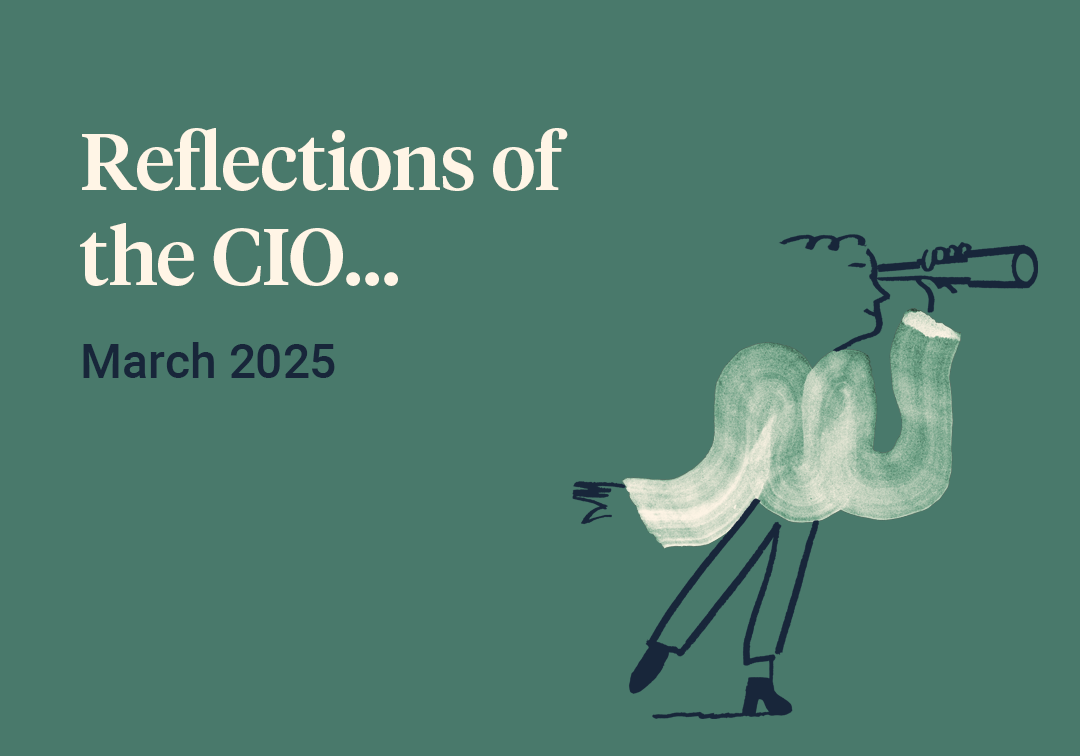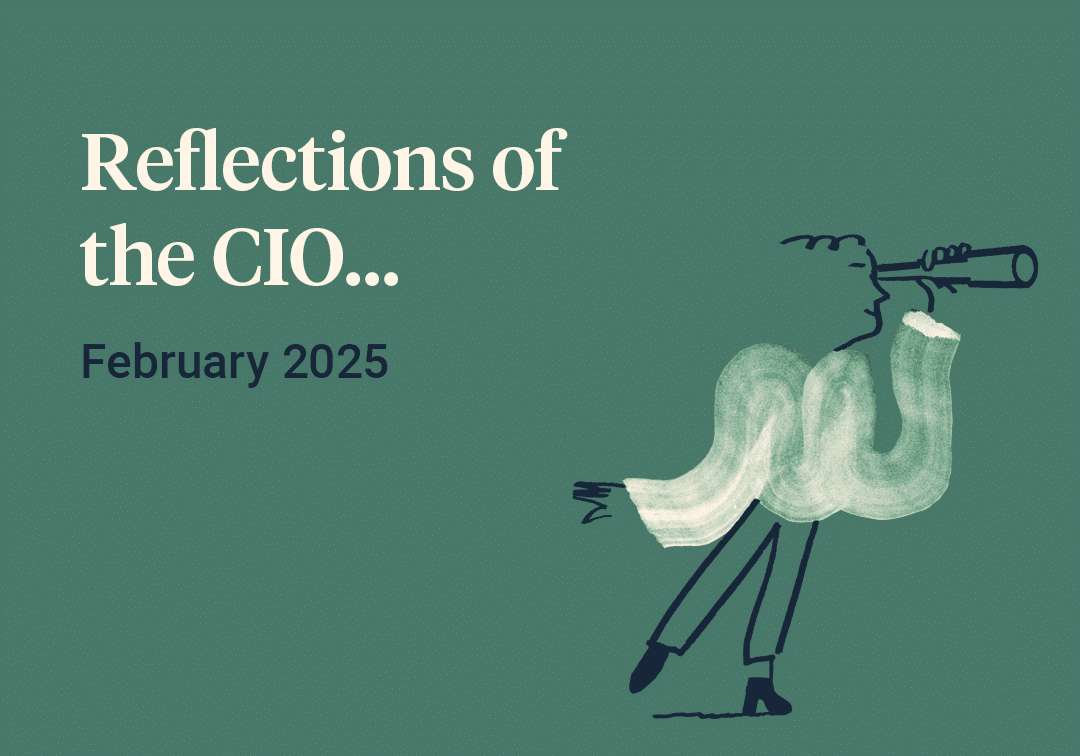January was a period of optimism in world markets, with practically any asset that had a tough 2022 rallying hard over the course of the month. Most currency pairs rose against the dollar and stock and bond markets also recovered, led by the most cyclical and beaten up of sectors. Although there were strong elements of more technical forces at work – everything from short covering to Asian Central Bank liquidity injections – there was also a much more encouraging set of fundamentally based reasons behind the moves. Markets were right to respond positively to these reasons, albeit there is now also a raging debate in investment circles about just how much positivity is really justified.
We can see three broad fundamental changes behind the recent moves in asset prices. The re-opening of the Chinese economy after the ending of ‘zero Covid’ policies was undoubtedly a welcome, positive support for global growth prospects, as was the sharp decline in energy prices. Evidence was also building that inflationary pressures across the developed economies had now peaked and had begun to decline. The unblocking of bottlenecks in the global supply chain was one of the key drivers of this reversal, with outright deflation now visible across the manufactured goods sector. As already mentioned, declines in energy prices (natural gas and oil) are now very sharp compared to their post Ukraine invasion spikes, with mild weather and new supply behind the downward impetus. This combination of events has acted to reduce the chances of a big further spike in inflation rates as we go forward and, in the market’s eyes at least, it is now time to start factoring in the point at which interest rates start falling from their current multi year highs.
However not everyone is so sure that we have emerged so quickly from the ‘inflationary woods’. Corporations, strategists and most economists still feel that the impact of the interest rate rises of last year and this has yet to be felt. Very close attention is being paid to the current corporate earnings season and the policy communications of the major central banks in order to assess the chances of interest rates continuing to climb or fall from here. Unfortunately, the available data so far from both sources is effectively ending up saying that it is still too early to tell. Economic slowdown has yet to bite in employment markets and although corporate profit estimates have been falling for several months, there hasn’t been such a big fall that we could say that recession risks are now largely ‘in the price’. As January’s good performance indicates, markets have erred on the side of optimism and although they are meant to be forward looking mechanisms, most forecasters, including us, still lean towards the conclusion that we need more data before becoming comfortable with the assumption that all the bad news was confined to 2022.
Do you need help managing your investments?
Our team can recommend an investment strategy to meet your financial objectives and give you peace of mind that your investments are in good hands. Get in touch to discuss how we can help you.

As is usually the case, there were also several other complicating factors during January which made interpreting events difficult. The Bank of Japan for example, has been intervening heavily in its (very large) government bond market, spending north of $250bn in January to maintain a monetary policy that markets think has run its course. At the same time the People’s Bank of China has been pumping in over $450 bn of extra liquidity into the Chinese economy, partly as a continuation of normal practice over Chinese new year, but also we can’t help feel as part of an ongoing support program for a property sector that is still in deep trouble. Neither of the underlying reasons for such sizeable intervention are actually positive, but when a liquidity injection that large is provided to the global system, it will provide some kind of boost to asset prices, regardless of the merits of the underlying reasons.
There are also numerous examples of just how sensitive and fickle stock markets are at the moment. Microsoft’s quarterly earnings report began positively enough, with the market initially pushing the share price up 4.5% on the back of a key division reporting revenue growth 1% ahead of expectations. However, during the analyst conference call a few hours later, the mild revelation that this outperformance will likely fade to the same degree in the months ahead was met with an immediate selloff, with the share price eventually back where it started preannouncement. Stock markets are rewarding companies for good news about historical profits, and then reversing that opinion on the mildest of negative changes to future outlook.
Taking everything together the current state of global markets is something of a curate’s egg. There are good reasons behind a strong January performance, but also some more temporary technical factors and a large dose of uncertainty remaining over the future economic outlook. Rather than pretend we have a particular insight into how this will all pan out in the very near term, we will instead be spending our time focussing on the areas which offer the biggest risks and rewards to your portfolios. The biggest risks we think centre around a co-ordinated sell off in stock and bond markets, if inflation numbers don’t continue to fall as sharply as expected. The biggest opportunities are still in cheap, risky and under owned assets such as emerging market debt or small to mid-sized equities. Blending the two is your committee’s ongoing challenge, which we will be drilling into in more detail over the next few weeks, and which we will keep you closely up to date with when (or if) we make any portfolio changes.
Do you need help managing your investments?
Our team can recommend an investment strategy to meet your financial objectives and give you peace of mind that your investments are in good hands. Get in touch to discuss how we can help you.

Article sources
Editorial policy
All authors have considerable industry expertise and specific knowledge on any given topic. All pieces are reviewed by an additional qualified financial specialist to ensure objectivity and accuracy to the best of our ability. All reviewer’s qualifications are from leading industry bodies. Where possible we use primary sources to support our work. These can include white papers, government sources and data, original reports and interviews or articles from other industry experts. We also reference research from other reputable financial planning and investment management firms where appropriate.
The views expressed in this article are those of the Saltus Asset Management team. These typically relate to the core Saltus portfolios. We aim to implement our views across all Saltus strategies, but we must work within each portfolio’s specific objectives and restrictions. This means our views can be implemented more comprehensively in some mandates than others. If your funds are not within a Saltus portfolio and you would like more information, please get in touch with your adviser. Saltus Asset Management is a trading name of Saltus Partners LLP which is authorised and regulated by the Financial Conduct Authority. Information is correct to the best of our understanding as at the date of publication. Nothing within this content is intended as, or can be relied upon, as financial advice. Capital is at risk. You may get back less than you invested. Tax rules may change and the value of tax reliefs depends on your individual circumstances.
Related blog posts
About Saltus?
Find out more about our award-winning wealth management services…
Winner
Best Wealth Manager
Winner
Investment Performance: Cautious Portfolios
Winner
Top 100 Fund Selectors 2024
Winner
Best Places to Work 2024
£8bn+
assets under advice
20
years working with clients
350+
employees
97%
client retention rate


